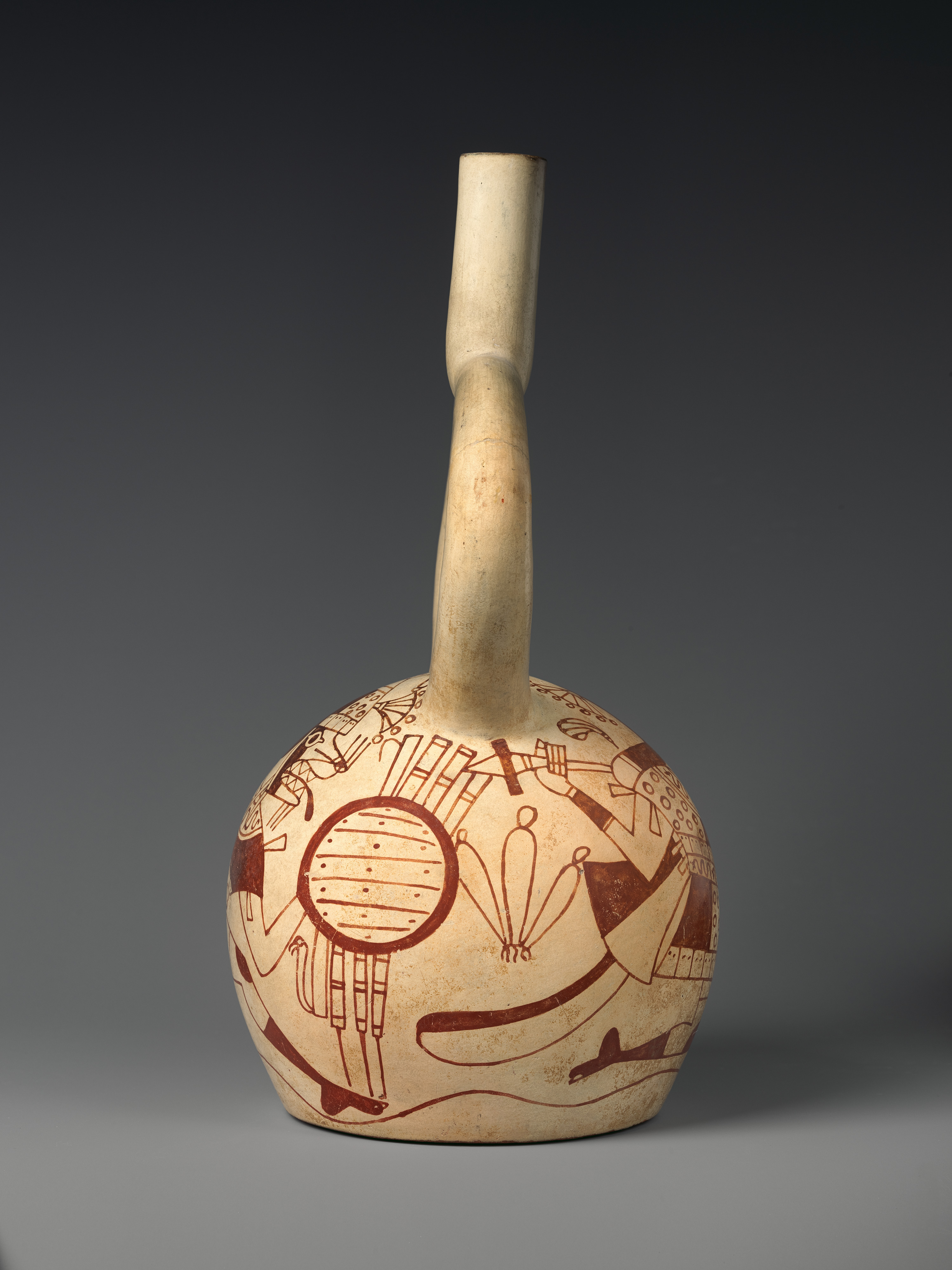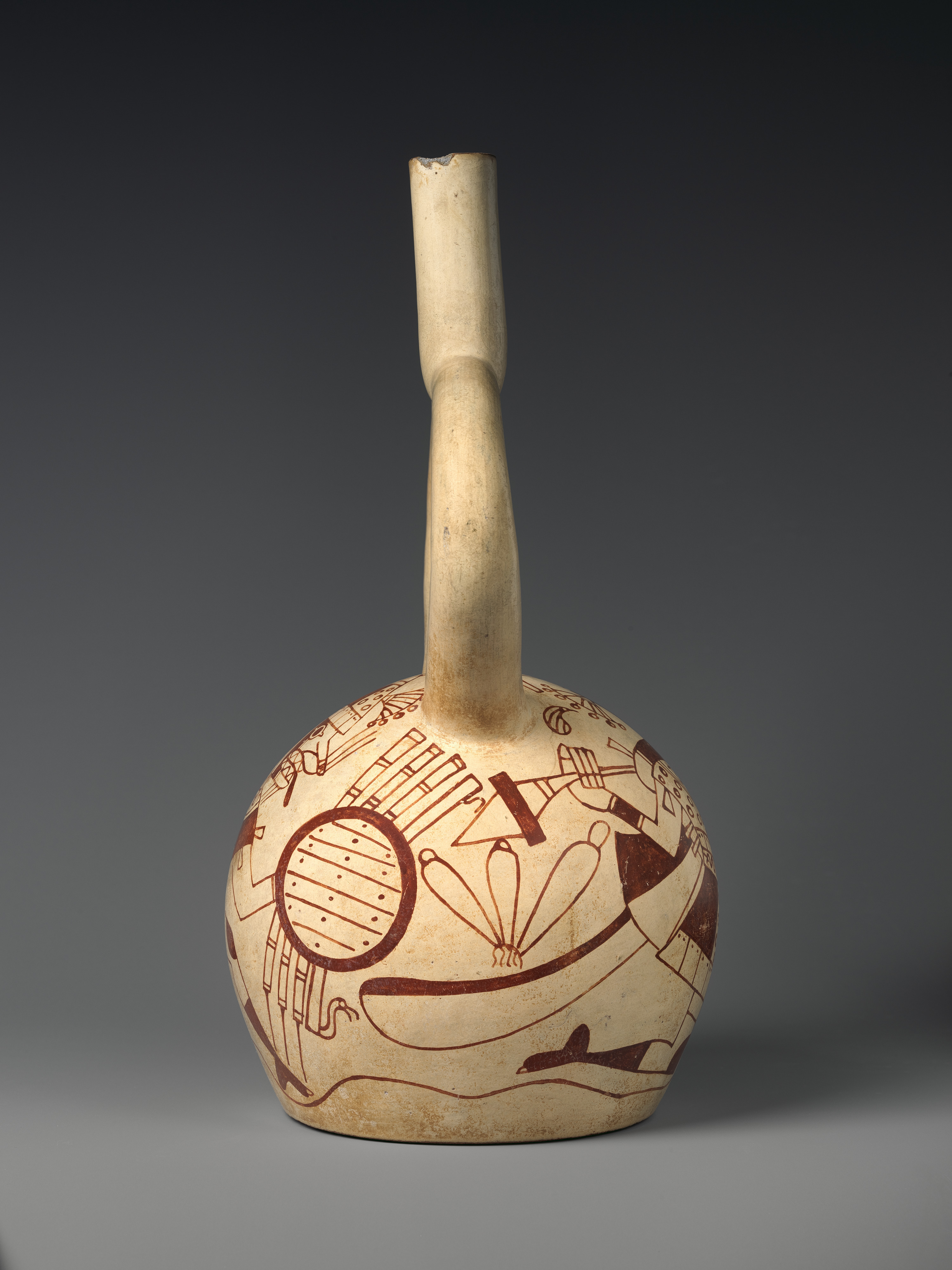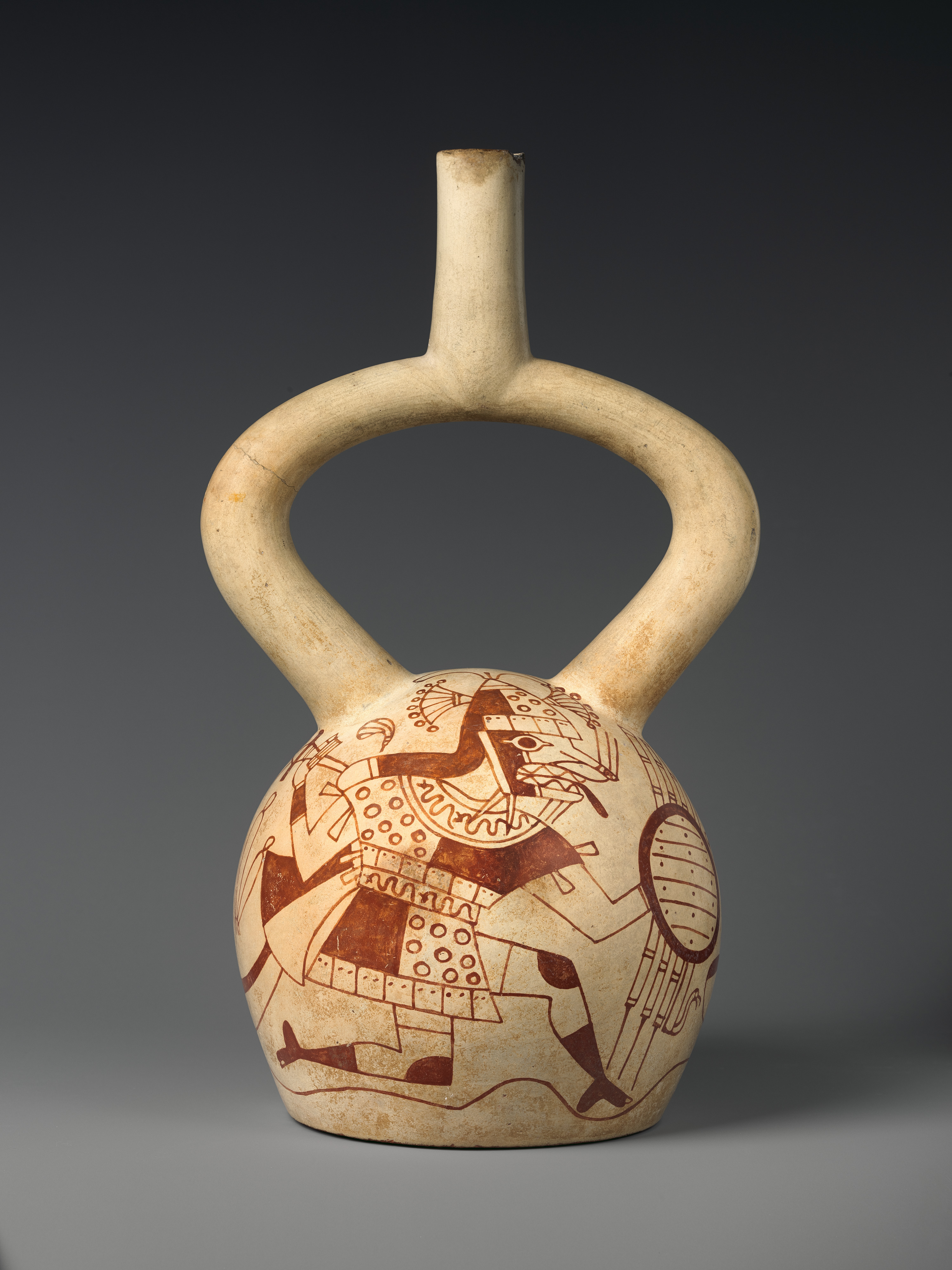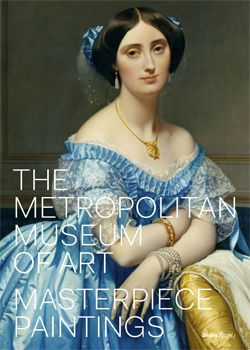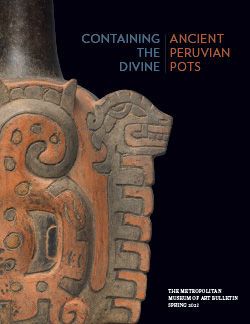Stirrup-spout bottle with fox warrior
The stirrup-spout vessel—the shape of the spout recalls the stirrup on a horse's saddle—was a much favored bottle shape on Peru's northern coast for about 3,000 years. Although the importance and symbolism of this distinctive form is still puzzling to scholars, it has been suggested that the double-branch/single-spout shape may have prevented evaporation of liquids, and/or that it was convenient for carrying. Early in the first millennium A.D., the Moche elaborated stirrup-spout bottles into sculptural shapes depicting a wide range of subjects, including human figures, animals, and plants worked with a great deal of naturalism. About 500 years later, bottle chambers became predominantly globular, providing large surfaces for painting complex multifigure scenes. On this bottle, two animated warriors, their faces covered with fox face masks, carry round shields and war clubs. They are shown running across a hilly desert landscape indicated by a wavy line and cactus plants. A strong sense of forward motion is conveyed by leaning bodies and long strides. The warriors wear decorated long skirts, trapezoidal belt ornaments, and conical helmets.
Due to rights restrictions, this image cannot be enlarged, viewed at full screen, or downloaded.
This artwork is meant to be viewed from right to left. Scroll left to view more.



